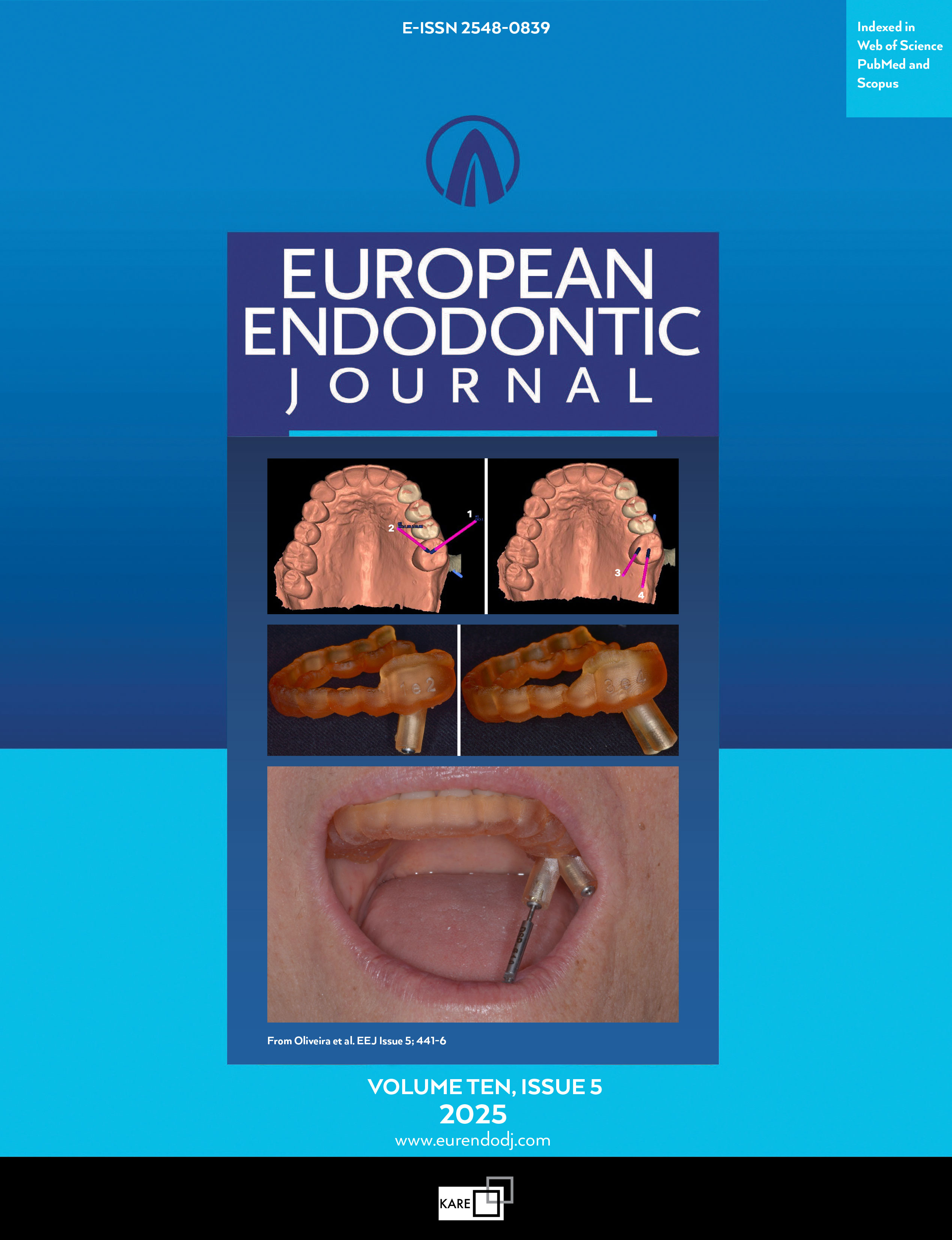Metrics
2024 IMPACT FACTOR
5 year Impact Factor
Eigenfactor Score
2024 CiteScore
Journal Citation Reports
(Clarivate 2025, JIF Rank)
Comparative Buckling Strength and Metallurgical Analysis of Five Classic NiTi Endodontic Rotary Files
Abayomi Baruwa1, Duarte Marques2, João Caramês3, Francisco Manuel Braz Fernandes4, Jorge Martins21Department of Clinical Sciences, College of Dentistry, Ajman University, Ajman, United Arab Emirates; Faculty of Dental Medicine, University of Lisbon, Lisboa, Portugal2Faculty of Dental Medicine, University of Lisbon, Lisboa, Portugal; Laboratory for Instrumentation, Biomedical Engineering and Radiation Physics, Lisboa, Portugal; Oral Biochemistry and Biology Research Group (GIBBO), Oral and Biomedical Sciences Research Unit, Lisboa, Portugal; Center for Evidence-Based Dental Medicine Studies (CEMDBE), Lisboa, Portugal; Institute of Implantology, Lisboa, Portugal
3Faculty of Dental Medicine, University of Lisbon, Lisboa, Portugal; Institute of Implantology, Lisboa, Portugal
4CENIMAT/I3N, Department of Materials Science, NOVA School of Science and Technology, University of NOVA Lisboa, Lisboa, Portugal
Objective: Nickel-titanium (NiTi) rotary instruments have revolutionized endodontic practice through continuous advancements in metallurgy and design. Despite these improvements, mechanical failure remains a clinical concern. This study aimed to evaluate and compare the design features, metallurgical properties, and buckling resistance of five widely used NiTi rotary endodontic systems.
Methods: A total of 250 new NiTi rotary instruments from five systems (ProTaper Next, Mtwo, ProFile, EndoSequence, and GT Series X) were analyzed. Design features were assessed using dental microscopy and scanning electron microscopy. Metallurgical properties were evaluated through energy-dispersive X-ray spectroscopy and differential scanning calorimetry. Buckling resistance was measured using a universal testing machine equipped with a 1 kN load cell, applying a compressive load at 1 mm/min until 1 mm of lateral displacement was achieved. Statistical analysis was performed using the ShapiroWilk test to assess normality, followed by the non-parametric Kruskal-Wallis test to compare groups. A significance level of p<0.05 was adopted.
Results: ProFile instruments exhibited the highest number of spirals (19) and spiral density (1.19 spirals/mm), while GT Series X featured the shortest cutting blade length (≤12 mm). All systems demonstrated near-equiatomic nickel-titanium ratios. ProTaper Next and GT Series X showed higher R-phase and austenitic transformation temperatures. Buckling resistance was significantly greater in the ProFile (0.04 and 0.06 taper) and EndoSequence 35/.06 and 40/.06 instruments (p<0.05). In contrast, EndoSequence 0.04 files, Mtwo, and ProTaper Next exhibited lower resistance.
Conclusion: Design features, taper, and metallurgical composition significantly influence the buckling resistance of NiTi rotary endodontic instruments.
Manuscript Language: English
(192 downloaded)


